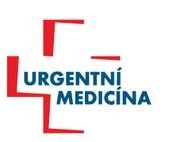INTRODUCTION
- Editorial – Jana Šeblová
- Contents
EDUCATION, EXPERIENCE
- Utilization of simulation medicine in prehospital emergency care education – Katarína Veselá
CLINICAL TOPICS AND RESEARCH
- Curriculum of emergency ultrasound for Emergency medicine specialists – Roman Škulec (první autor a editor), Patrik Christian Cmorej, Miroslav Durila, David Peřan, Ondřej Rennét, Lubomír Večeřa, Pavel Vojtíšek (další autoři podle abecedního pořadí)
- Effective power distribution of two rescuers during resuscitation: a simulation study – Jindra Holeková, Karolína Kalužová, Jan Pospíchal
- Analysis of Helicopter Emergency Medical Services´ dispatch figures in 2017 – Jaroslav Kratochvíl, Eva Smržová
- Abstracts from 25th Dostál´s Days of Emergency Medicine Congress, Ostrava 23th to 25th October 2018
RESUSCITATION – CZECH RESUSCITATION COUNCIL NEWSLETTER
- Czech Resuscitation Council symposium RESUSCITATION 2018, 8th June 2018 – David Peřan, Jana Šeblová, Anatolij Truhlář
INFORMATION
- Information about activities of Helicopter Emergency Medical Service Section of Society for Emergency and Disaster Medicine CzMA JEP – Eva Smržová
- Ten years of emergency and general medicine department – Oto Masár
ABSTRACTS
Utilization of simulation medicine in prehospital emergency care education
KATARÍNA VESELÁ
Abstract
Simulation enables knowledge and skills to be gained in a safe, educational and effective way. Simulation medicine is a modern dynamically developing way of teaching in healthcare using a patient simulator. The goal of this communication is to provide a comprehensive view on the possible use of this technology to improve healthcare with respect to the safety of patients.
Key words: non-technical skills – patient safety – simulation – simulation medicine
Effective power distribution of two rescuers during resuscitation: a simulation study
JINDRA HOLEKOVÁ, KAROLÍNA KALUŽOVÁ, JAN POSPÍCHAL
Abstract
Background: The Basic life supprot (BLS) has been constantly improving. The BLS is physically demanding aktivity and has been proven the advantage of more bystanders on site. The article focuses on the effectiveness of the power distribution of two bystanders during BLS.
Aim: To determine the effectiveness of the BLS performed by one bystander changing in 2 minute intervals or two bystanders at the same time throughout the BLS.
Methods: The BLS simulation based prospective study. 40 participants (20 pairs of paramedic students) were involved in this study. First, BLS was performed by one bystander (changing cycles of rest and BLS after 2 minutes) for ten minutes and after 60 minutes of rest, was performed by two bystanders at the same time. The efficiency and correctness of resuscitation, physical exertion and subjective feelings were evaluated.
Results: Overall success rate of the BLS was not different (96% and 97% respectively) in both groups. The other evaluated parameters were slightly better when BLS was performed with two bystanders at the same time. The increase of heart rate was significantly lower (P = 0.000) after the BLS in two bystanders, as well as the respiratory rate (p = 0.000). The incidence of reddening in the face was not significantly higher (p = 0.084).
Conclusions: Properly performed BLS is possible using both ways. Simultaneous BLS with two bystanders is less physically demanding, based on the results of hear rate, respiratory rate, blood pressure and subjective evaluation of participants.
Key words: Cardiopulmonary resuscitation – effectivity – basic life support – first aid
Analysis of Helicopter Emergency Medical Services´ dispatch figures in 2017
JAROSLAV KRATOCHVÍL, EVA SMRŽOVÁ
Abstract
Based on available statistical data of year 2017 significant differences in the way of HEMS deployment among individual HEMS bases and medical dispatching are evident. Causes of such a dissimilarity lie in objective locoregional specifics on one side and in different way of dispatching practice and management on the other side. Higher system efficiency is conditioned by rationalization of dispatching practice and precise quality management.
Key words: Helicopter Emergency Medical Service (HEMS) – Medical Dispatch
